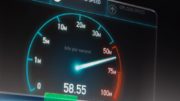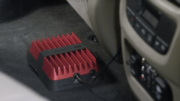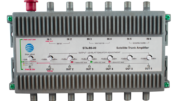Technically it is possible to use a UHF antenna for a cell booster. Cellular telephones use frequencies just above those used for UHF television, and it’s possible that even though a TV antenna wasn’t designed for it, it could pick up some of those frequencies. In fact, most of the 5G signals used by Verizon and T-Mobile are on frequencies once used for UHF TV.
Unpacking all of this
Let’s back up a little bit and explain a bit about broadcasting. When you see a frequency, that’s really telling you that the information is built into a “carrier wave” that has a certain number of highs and lows in it. A 150MHz signal has a basic vibration rate, that is to say it changes in some meaningful and predictable way, 150 million times every second. That might be enough to blow your mind right there.
Signals with different frequencies don’t really interfere with each other much. There’s a little bit of a problem when the frequencies are exact multiples or fractions of each other (in frequencies, we call these “harmonics”) so that a 400MHz signal could interfere with a 200MHz one. So broadcast frequencies tend to have a little more of a complex pattern to them so that there’s not so much of a problem with that.
Here’s another bit that helps you to understand — the “wavelength” of a signal is the distance between two peaks (or two valleys, it doesn’t matter.” As the frequency goes up, the wavelength goes down. It’s not a terribly hard bit of math to convert from one to the other, as long as you know the speed of light. If you’re interested, here’s a calculator to help.
How an antenna does what it does
Which leads you to the basic idea of how an antenna does the very thing that it does. When you have a piece of metal that’s good at conducting electricity, it’s going to be very good at conducting electricity when the length of the metal (this is actually the “antenna”) is a fraction or multiple of the wavelength. If the wave is 1 meter long, you’ll do best to receive it with an antenna that’s half a meter, 1 meter, or 2 meters, as opposed to .6875 meters. Heavy, right? That’s why antennas are all different shapes, because they specialize in pulling in different signals.
So let’s take a specific case. Some cell signals travel on a carrier of 1900MHz. (If you’ve been following along and you went to that web page, that means the wave is 15cm long, about 9 inches.) If you’re using a UHF antenna that’s designed to pull in UHF channel 14, it so happens that UHF channel 14 broadcasts at 475MHz, exactly one quarter the frequency of cell phones. So an antenna that pulls in channel 14 is also going to do an ok job of pulling in cell phone frequencies at 1900 megahertz.
But is this really the best way to go?
But this really is all theory. The best cell antennas are the ones that are specifically designed to pull in the very specific frequencies used for cell phones here in the US: 600-850MHz and 1700-2500MHz. Other antennas may work ok, but there’s no real excuse for not using a specific cellular antenna. I mean, especially when Solid Signal has such a wide variety of them. The nature of cellular broadcasting means that outdoor antennas designed for cellular tend to be smaller. Why? Because higher frequencies have smaller wavelengths. They also tend to be easier to mount, and they’re not terribly expensive.
So in theory, yes, a TV antenna could work for cellular. That is, if you’re MacGyver and you’re stuck in a locked room with a bomb going off. In real life, do it right; get a cellular antenna. Even better, get a cell phone signal booster. It’s more than an antenna. It rebroadcasts signals inside to give you better reception. If you’re not sure which one you need, call us! We’re here for you at 888-233-7563. If it’s after hours, fill out the form below and we’ll get right back to you!





